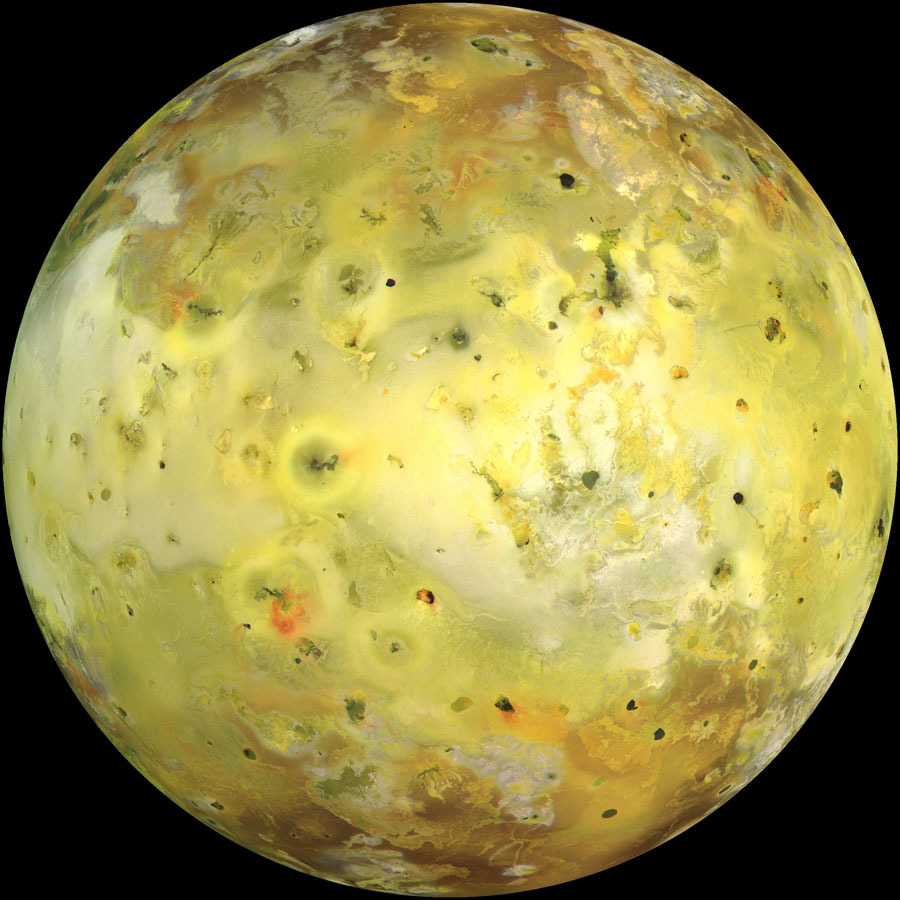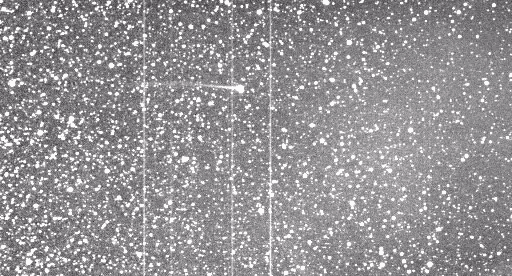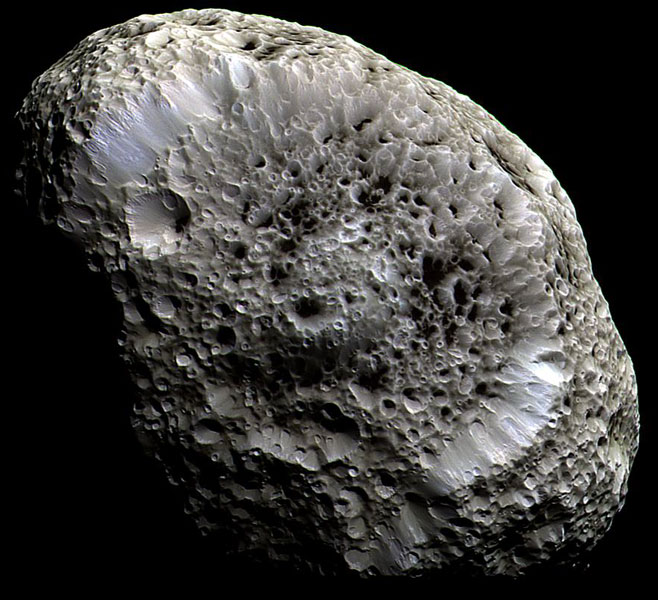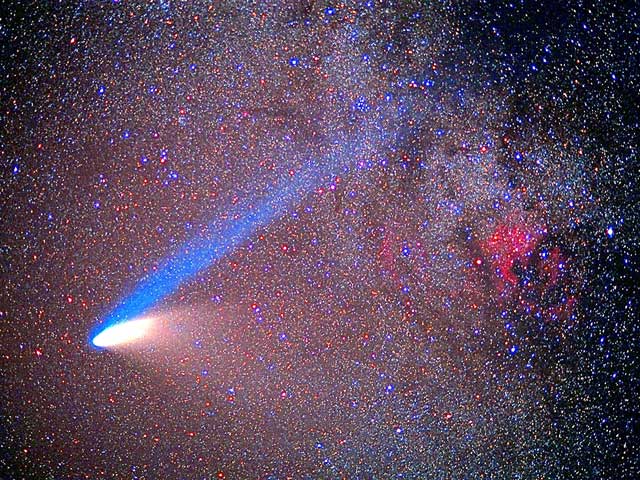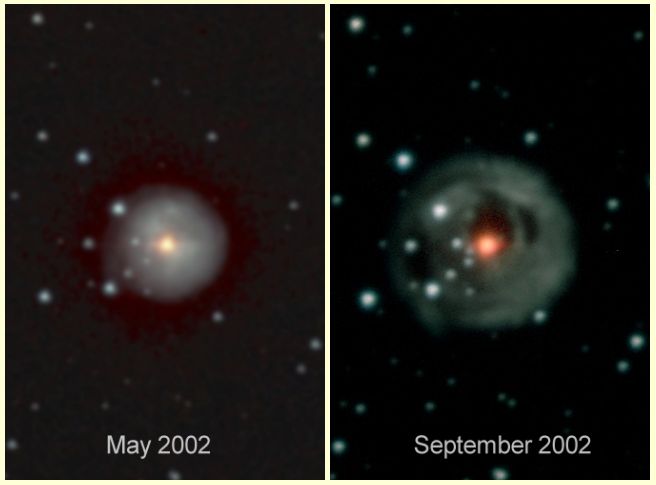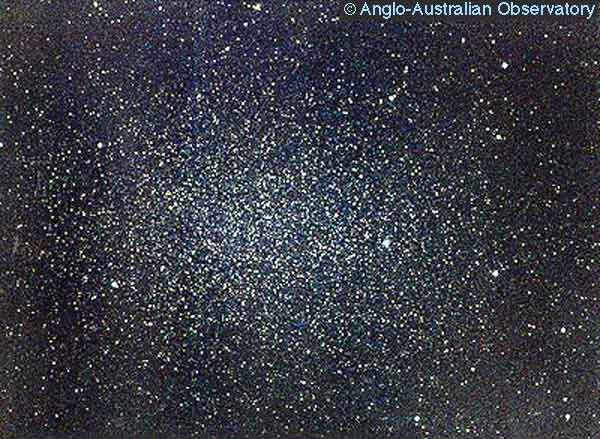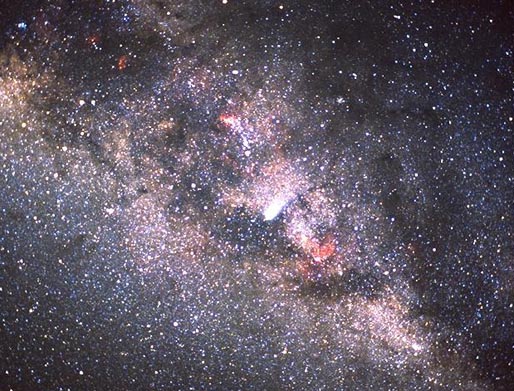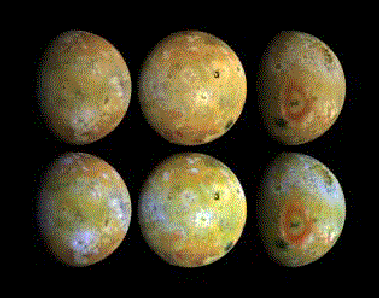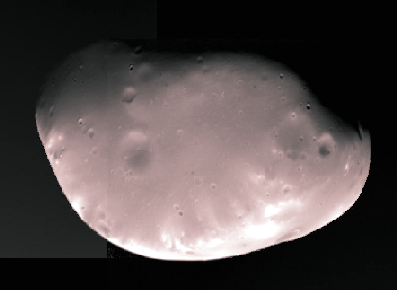APOD Retrospective: October 3
Posted: Mon Oct 03, 2011 3:54 am
[table][tr][td=left]<< Previous[/td][td=center]Index[/td][td=right]Next >>[/td][/tr][/table][/b]
2014 Stepping stones seem to lead to the Milky Way as it stretches across this little sky. Of course, the scene is really the northern hemisphere's autumnal equinox night. Water and sky are inverted by a top to bottom, around the horizon stereographic projection centered on the zenith above Lake Storsjön in Jämtland, Sweden. In the north the Milky Way arcs from east to west overhead as fall begins, but the season is also a good time for viewing aurora. Geomagnetic storms increase in frequency near the equinox and produce remarkable displays of northern lights at high latitudes, like the eerie greenish glow reflected in this watery cosmos.
2013
2012
[imghover6=http://apod.nasa.gov/apod/image/1210/go ... do_800.jpg]http://apod.nasa.gov/apod/image/1210/go ... ed_800.jpg[/imghover6]Image Credit & Copyright: Juan Carlos Casado (TWAN)
2011
Video Credit: A. Klypin (NMSU), J. Primack (UCSC) et al., Chris Henze (NASA Ames), NASA's Pleiades Supercomputer
Music (© 2002): Her Knees Deep in Your Mind by Ray Lynch
Music (© 2002): Her Knees Deep in Your Mind by Ray Lynch
2010 The strangest moon in the Solar System is bright yellow. This picture, an attempt to show how Io would appear in the "true colors" perceptible to the average human eye, was taken in 1999 July by the Galileo spacecraft that orbited Jupiter from 1995 to 2003. Io's colors derive from sulfur and molten silicate rock. The unusual surface of Io is kept very young by its system of active volcanoes. The intense tidal gravity of Jupiter stretches Io and damps wobbles caused by Jupiter's other Galilean moons. The resulting friction greatly heats Io's interior, causing molten rock to explode through the surface. Io's volcanoes are so active that they are effectively turning the whole moon inside out. Some of Io's volcanic lava is so hot it glows in the dark.
2009 Scheduled to illuminate the landscape throughout the night tomorrow, October's bright Full Moon will also be called the Harvest Moon. Traditionally, the Harvest Moon is the Full Moon closest to the autumnal equinox. But in this vacation snapshot, the Full Moon could be called the "Old Faith-Full Moon". Taken on September 4, the picture combines the regularly occurring lunar phase with Old Faithful Geyser in Yellowstone National Park, named for its dependable erruptions. Shining on the well-known geyser's towering pillar from behind, the moonlight creates an eerie halo surrounding convoluted shapes. Faithfully, the Full Moon itself is bright enough to be seen through the dense swirling steam near the top.
2008 Young suns still lie within dusty NGC 7129, some 3,000 light-years away toward the royal constellation Cepheus. While these stars are at a relatively tender age, only about a million years old, it is likely that our own Sun formed in a similar stellar nursery some five billion years ago. Most noticeable in the striking image are the lovely bluish dust clouds that reflect the youthful starlight, but the smaller, deep red crescent shapes are also markers of energetic, young stellar objects. Known as Herbig-Haro objects, their shape and color is characteristic of glowing hydrogen gas shocked by jets streaming away from newborn stars. Ultimately the natal gas and dust in the region will be dispersed, the stars drifting apart as the loose cluster orbits the center of the Galaxy. At the estimated distance of NGC 7129, this telescopic view spans about 40 light-years.
2007 Swinging inside the orbit of Mercury, on April 20th periodic comet Encke encountered a blast from the Sun in the form of a Coronal Mass Ejection (CME). When CMEs, enormous clouds of energetic particles ejected from the Sun, slam into Earth's magnetosphere, they often trigger auroral displays. But in this case, the collison carried the tail of the comet away. The tail was likely ripped off by interacting magnetic fields rather than the mechanical pressure of the collision. Clicking on the two panel image will play a movie gif of the remarkable event as recorded by the Heliospheric Imager onboard the STEREO A spacecraft. In the movie, the time between frames is about 45 minutes, while the frames span about 14x20 million kilometers at the distance of the comet. Of course, similar collisions have happened before as the ancient comet loops through its 3.3 year solar orbit. So don't worry, Encke's tail grows back!
2006 What powers the Heart Nebula? The large emission nebula dubbed IC 1805 looks, in whole, like a human heart. The nebula glows brightly in red light emitted by its most prominent element: hydrogen. The red glow and the larger shape are all created by a small group of stars near the nebula's center. A close up spanning about 30 light years contains many of these stars is shown above . This open cluster of stars contains a few bright stars nearly 50 times the mass of our Sun, many dim stars only a fraction of the mass of our Sun, and an absent microquasar that was expelled millions of years ago. The Heart Nebula is located about 7,500 light years away toward the constellation of Cassiopeia.
2005 What lies at the bottom of Hyperion's strange craters? Nobody knows. To help find out, the robot Cassini spacecraft now orbiting Saturn swooped past the sponge-textured moon again last week and took an image of unprecedented detail. That image, shown above in false color, shows a remarkable world strewn with strange craters and a generally odd surface. The slight differences in color likely show differences in surface composition. At the bottom of most craters lies some type of unknown dark material. Inspection of the image shows bright features indicating that the dark material might be only tens of meters thick in some places. Hyperion is about 250 kilometers across, rotates chaotically, and has a density so low that it might house a vast system of caverns inside.
2004 Comet Hale-Bopp's 1997 encounter with the inner Solar System allowed many breath-taking pictures. Above, Comet Hale-Bopp was photographed crossing the constellation of Cygnus, sporting spectacular yellow dust and blue ion tails. Visible on the right in red is the North America Nebula, a bright emission nebula observable from a dark location with binoculars. The North America Nebula is about 1500 light-years away, much farther than the comet, which was only about 8 light minutes away. Several bright blue stars from the open cluster M39 are visible just above the comet's blue ion tail.
2003 While this may not be the most esthetic image of Comet Halley that you have ever seen, it is likely the most unique. The tiny cluster of pixels circled is the famous comet along its orbit over 4 billion (4,000,000,000) kilometers or 28 AU from the Sun -- a record distance for a comet observation. Its last passage through our neck of the woods in 1986, Comet Halley presently cruises through the dim reaches of the outer solar system, almost as far away as outermost gas giant Neptune, and shows no sign of activity. Captured in March, this negative image is a composite of digital exposures made with three of ESO's Very Large Telescopes. The exposures are registered on the moving comet, so the picture shows background stars and galaxies as elongated smudges. An earth-orbiting satellite appears as a dark streak at the top. Comet Halley is clearly extremely faint here, but large earthbound telescopes will be able to follow it as it grows fainter still, reaching the most distant point in its orbit, more than 5 billion kilometers (35 AU) from the Sun, in 2023.
2002 A leading candidate for the most mysterious star found in recent times is variable star V838 Monocerotis. At a distance of about 8,000 light-years, V838 Mon was discovered to be in outburst in January of this year. Initially thought to be a familiar type of classical nova, astronomers quickly realized that instead, V838 Mon may be a totally new addition to the astronomical zoo. Observations indicate that the erupting star transformed itself over a period of months from a small under-luminous star a little hotter than the Sun, to a highly-luminous, cool supergiant star undergoing rapid and complex brightness changes. The transformation defies the conventional understanding of stellar life cycles. A most notable feature of V838 Mon is the "expanding" nebula which now appears to surround it. Seen above in two separate images from the South African Astronomical Observatory's 1 meter telescope, the nebula is probably a light echo from shells of formerly unseen material lost by the star during its previous evolution. Light-years in diameter, the shells progressively reflect the light from V838 Mon's outbursts, providing an opportunity to look back at the history of this remarkable star's behaviour.
2001 What do the Owl, the Cat's Eye, the Ghost of Jupiter, and Saturn have in common? They're all planetary nebulae of course(!), glowing gaseous shrouds shed by dying sun-like stars as they run out of nuclear fuel. Beautiful to look at, the symmetric, planet-like shapes of these cosmic clouds, typically 1,000 times the size of our solar system, evoke their popular names. Flipping through digital pictures made by participants in the Kitt Peak National Observatory Visitor Center's Advanced Observing Program, astronomer Adam Block created this delightful animation. Ten different planetary nebula images are presented, each registered on the central star. In order, their catalog designations are NGC 1535, NGC 3242 (Ghost of Jupiter), NGC 6543 (Cat's Eye), NGC 7009 (Saturn Nebula), NGC 2438, NGC 6772, Abell 39, NGC 7139, NGC 6781, and M97 (Owl Nebula). This glorious final phase in the life of a star lasts only about 10,000 years.
2000 The dramatic rotation of the cloud-tops of Saturn every ten-hours is particularly evident from orbit around the gas giant planet. With a good enough telescope, however, such rotation is visible even from Earth, as shown by this time-lapse image sequence from the Hubble Space Telescope taken in November 1990. Particularly evident at that time was a light-colored giant storm cloud system that completely encircled the planet. The storm was not evident twenty years ago during the flybys of the Voyager spacecraft -- a storm of this magnitude was last noted in 1933. Studying the complex atmosphere of Saturn will be one objective of the Cassini spacecraft launched by NASA in 1997 and expected to arrive in 2004.
1999 Leo I is a dwarf spheroidal galaxy in the Local Group of galaxies dominated by our Milky Way Galaxy and M31. Leo I is thought to be the most distant of the eleven known small satellite galaxies orbiting our Milky Way Galaxy. Besides the LMC and the SMC, all Milky Way satellite galaxies are small, dim, dwarf spheroidals, including the closest galaxy - the Sagittarius Dwarf. Leo I is more distant than most of them, thought to be about 250 kpc away. Although very little star-forming gas is visible in Leo I, analysis of star ages shows that stars have formed as recently as a billion years ago.
1998 Sputnik means "traveling companion". Despite the innocuous sounding name, the launch of the Earth's first "artificial moon", Sputnik 1, by the Soviets on October 4, 1957 shocked the free world, setting in motion events which resulted in the creation of NASA and the race to the Moon. Sputnik 1 was a 184 pound, 22 inch diameter sphere with four whip antennas connected to battery powered transmitters. The transmitters broadcast a continuous "beeping" signal to an astounded earthbound audience for 23 days. A short month later, on November 3, the Soviet Union followed this success by launching a dog into orbit aboard Sputnik 2.
1997 Comet Halley was photographed superposed in front of the disk of our Milky Way Galaxy in 1986 by the Kuiper Airborne Observatory. Comet Halley is the bright white streak near this photograph's center. Comet Halley is the most famous comet in history, and returns to the inner Solar System every 76 years. Stars visible in our Milky Way Galaxy typically lie millions of times farther in the distance and orbit the Galactic center every 250 million years. Billions of comets are thought to orbit our Sun but most do not get close enough for us to see. Similarly, billions of stars orbit our Milky Way's center but do not get close enough for us to see.
1996 The Galileo spacecraft orbiting Jupiter continues to return impressive results. The Galileo team has just released three more photographs of Jupiter's volcanic moon Io taken in June. These three photos are reflected at the bottom of the above picture, digitally enhanced to better show important features. Some areas of Io, it now appears, are truly red, not the usual green and yellow hues recorded previously. In fact, the last major mission - Voyager - did not have cameras sensitive to red light. This red material appears to be associated with recent volcanic eruptions, and the red color appears to fade with time. Comparisons of these photos with 17-year old Voyager photos show that about a dozen surface regions -- each the size of Connecticut-- have been affected by Io's active volcanoes.
1995 Mars has two tiny moons, Phobos and Deimos. Pictured above is Deimos, the smallest moon of Mars. In fact, Deimos is the smallest known moon in the Solar System measuring only 9 miles across. The diminutive Martian moons were discovered in 1877 by Asaph Hall, an American astronomer working at the US Naval Observatory in Washington D.C. The existence of two Martian moons was predicted around 1610 by Johannes Kepler, the astronomer who derived the laws of planetary motion. In this case, Kepler's prediction was not based on scientific principles, but his writings and ideas were so influential that the two Martian moons are discussed in works of fiction such as Jonathan Swift's "Gulliver's Travels", written in 1726, over 150 years before their actual discovery.
| << Previous | Index | Next >> |


